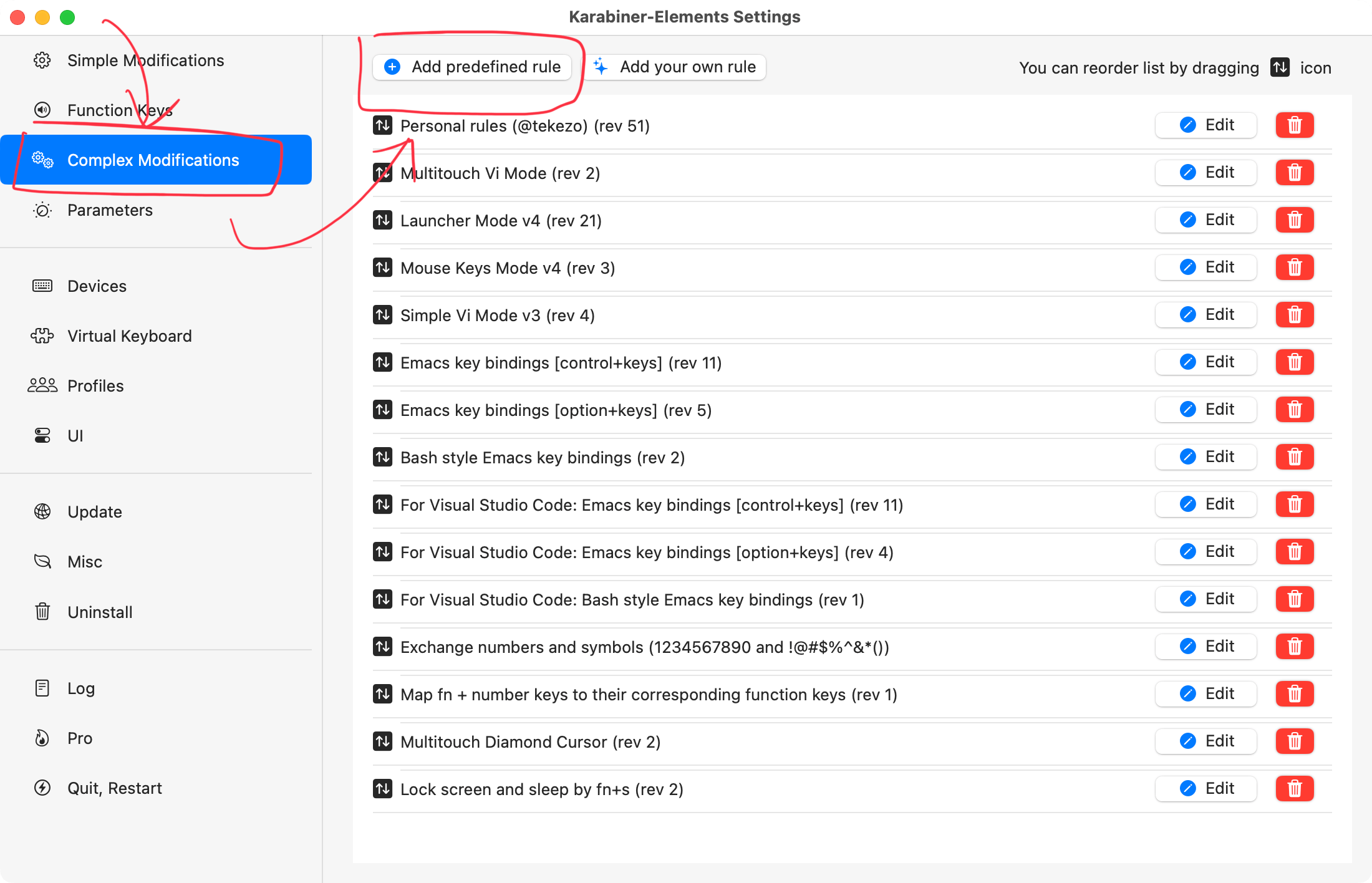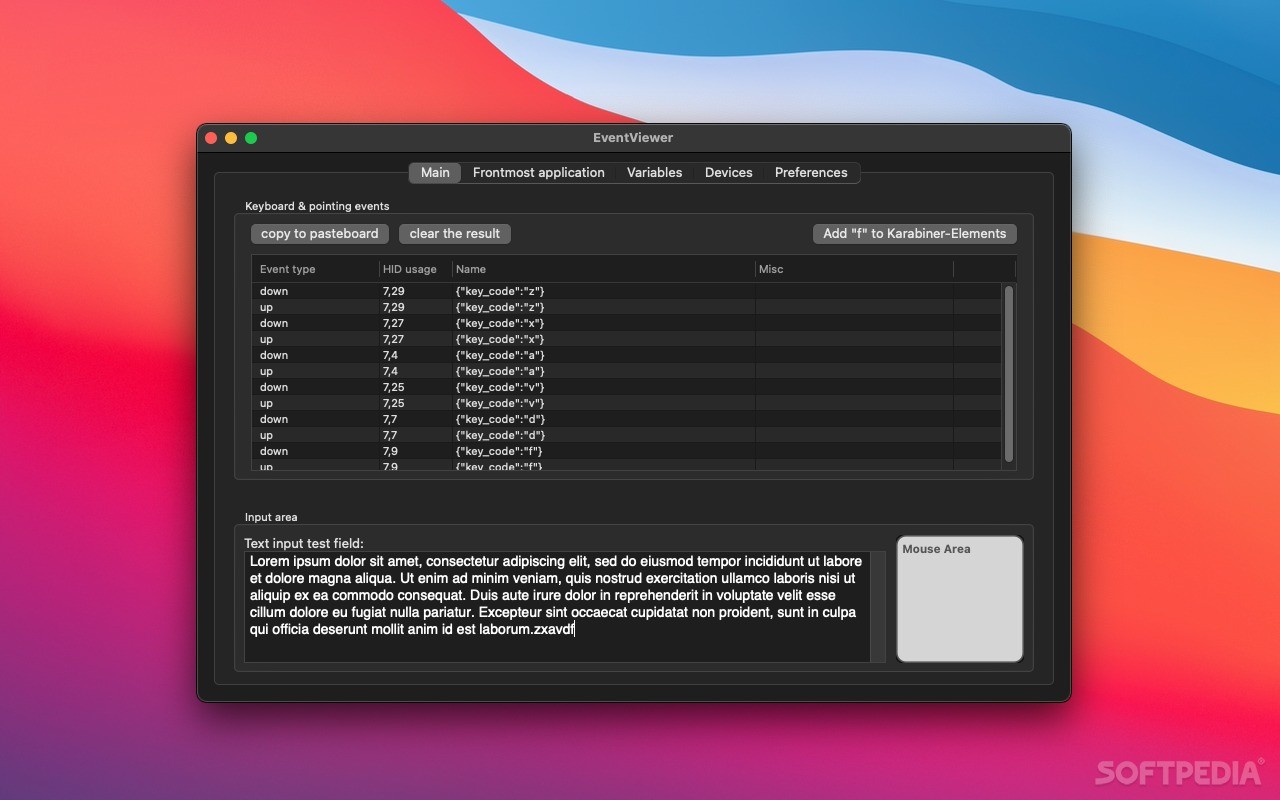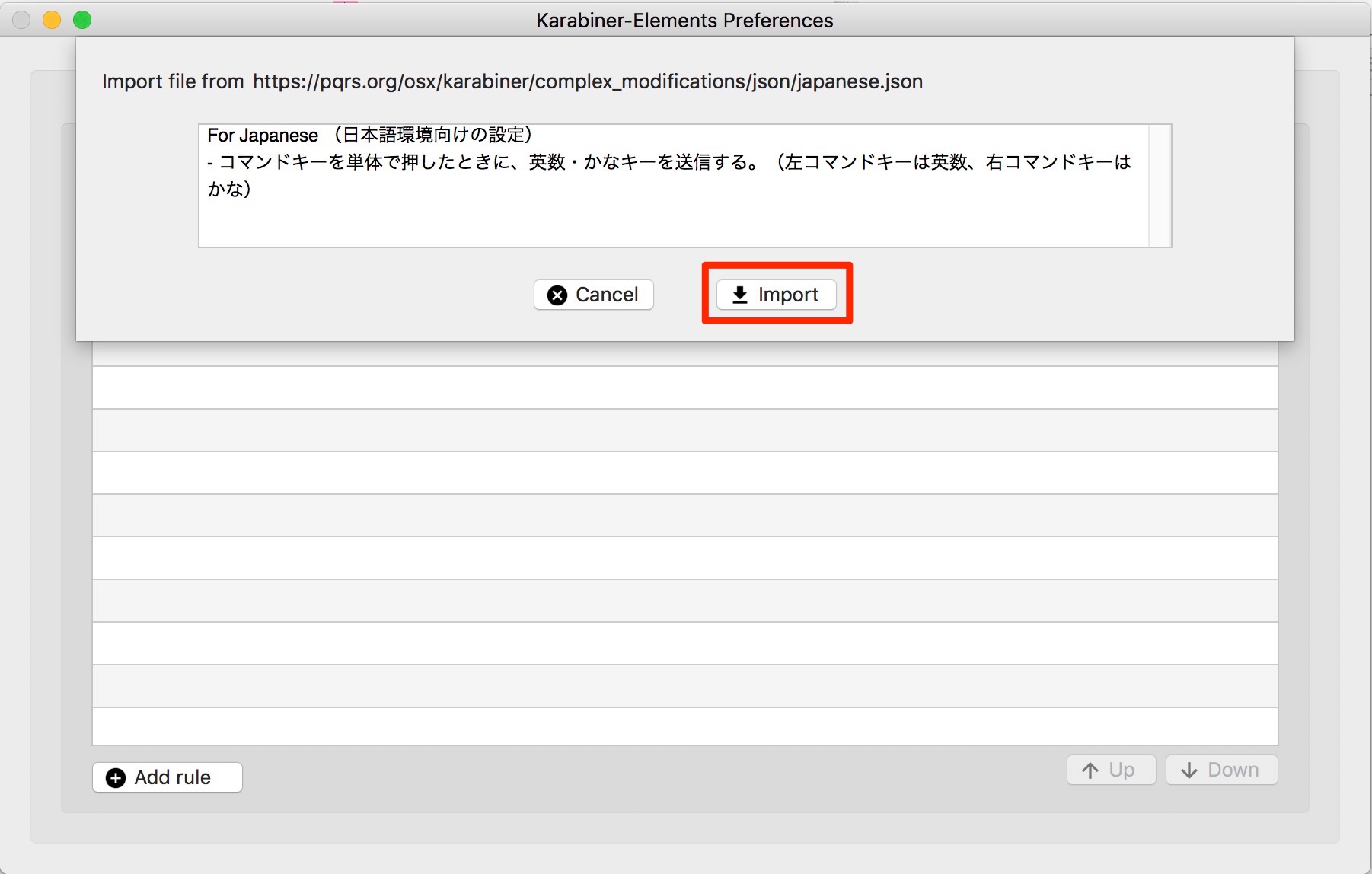
#Karabiner elements profiles pro#
For me, it occurs with any keyboard controlled by Karabiner-in my case an M1 14-inch MacBook Pro internal keyboard and a Magic Keyboard. I don't know what causes this behavior to exhibit with some input devices and not others. If we hold down the enter key when using the Apple menu longer than usual, we see the familiar unwanted sleep-wake behavior. This is why triggering sleep by pressing enter in the Apple menu doesn't exhibit the behavior an animation first plays in the menu, then the underlying action is triggered, by which time the key has been released. sleep 0.1 pmset sleepnow will exhibit the behavior if I don't release enter within 0.1 seconds, sleep 0.2 pmset sleepnow will exhibit the behavior if I don't release enter within 0.2 seconds, and so on. Pressing enter to run pmset sleepnow will exhibit the unwanted sleep-wake behavior. If I press and release the triggering key fast enough-and I mean truly fast, so that there is only a few ms between the key down and key up events-when triggering a sleep, then macOS will stay asleep. I'm guessing there's an event that occurs shortly after the first key down event triggers the system's sleep that causes the system to wake. The only exception to this I can find is that highlighting Sleep from the Apple menu then pressing enter will cause macOS to sleep and stay asleep, and I believe I know why. The same rules explain observations: exit the lock screen by pressing escape and macOS will sleep then wake, exit by clicking Cancel and macOS will stay asleep.

Timeout will fire in 47 secs Action=TimeoutActionTurnOffįrom my testing, Karabiner will cancel sleep if sleep is triggered by pressing a key on a Karabiner-controlled keyboard.įor example, when triggering sleep through Raycast or Alfred, pressing enter to activate the relevant sleep command will cause macOS to sleep then immediately wake clicking (in Raycast you can click on Open Command) to activate the sleep command will cause macOS to sleep and stay asleep. Pid 295(powerd): 00:04:12 InternalPreventDisplaySleep named: "" Pid 295(powerd): 00:00:00 UserIsActive named: ".useractive AppleHIDTransportHIDDevice:kIOHIDSystemActivityTickle n圎vent: 0" Pid 295(powerd): 24:42:39 PreventUserIdleSystemSleep named: "Powerd - Prevent sleep while display is on" Timeout will fire in 1800 secs Action=TimeoutActionRelease Just make sure you have Karabiner Elements running.Pid 351(WindowServer): 00:00:00 UserIsActive named: ".tickle serviceID:100000c23 name:AppleUserHIDEventSe product:Karabiner DriverKit eventType:3"

Use your favorite editor and edit the following file (create it if does not exist): vim ~/.karabiner.d/configuration/karabiner.json
#Karabiner elements profiles install#
Karabiner Elements will install a virtual keyboard driver, and you probably want to disable the default capslock behavior for the new virtual driver:

It's a little more complicated than usual: It's sister application Karabiner also stopped working.įortunately there's a solution available from the developer of Karabiner and Seil. One of the things that broke and really affected my workflow was that Seil, the program I use to remap Caps Lock to ESC, no longer works. MacOS Sierra was made available to the public yesterday and many of us early adopters rushed to install and test it out.

Map Caps Lock to Escape in macOS Sierra #seil


 0 kommentar(er)
0 kommentar(er)
